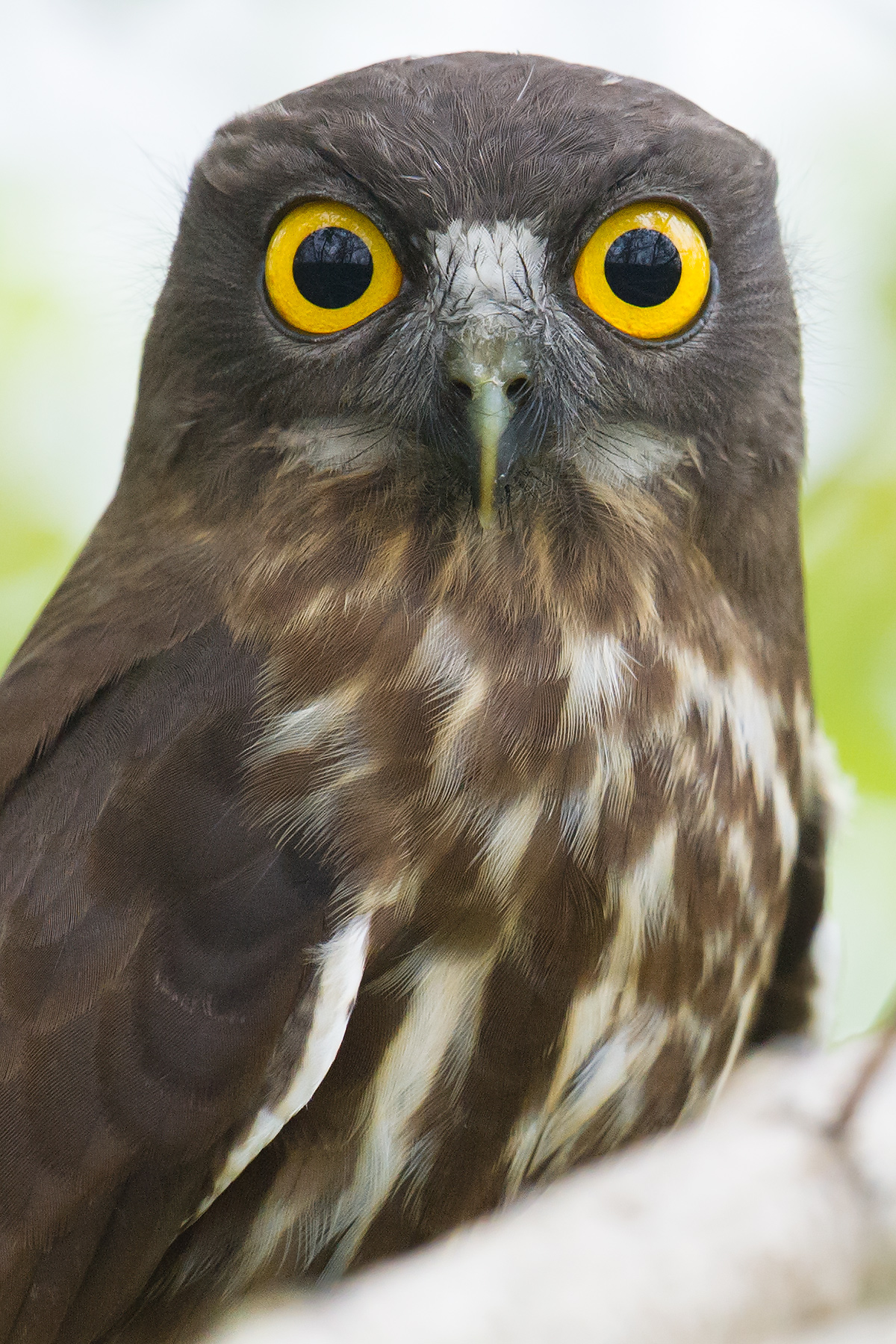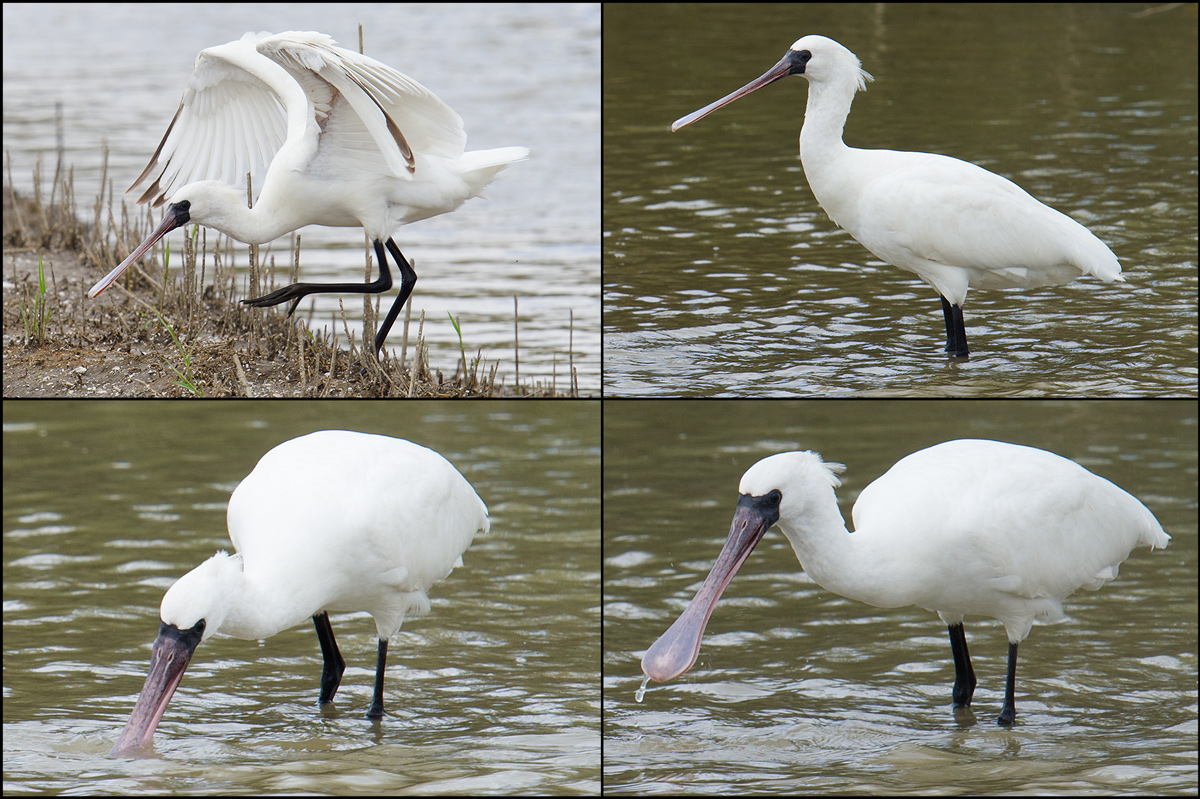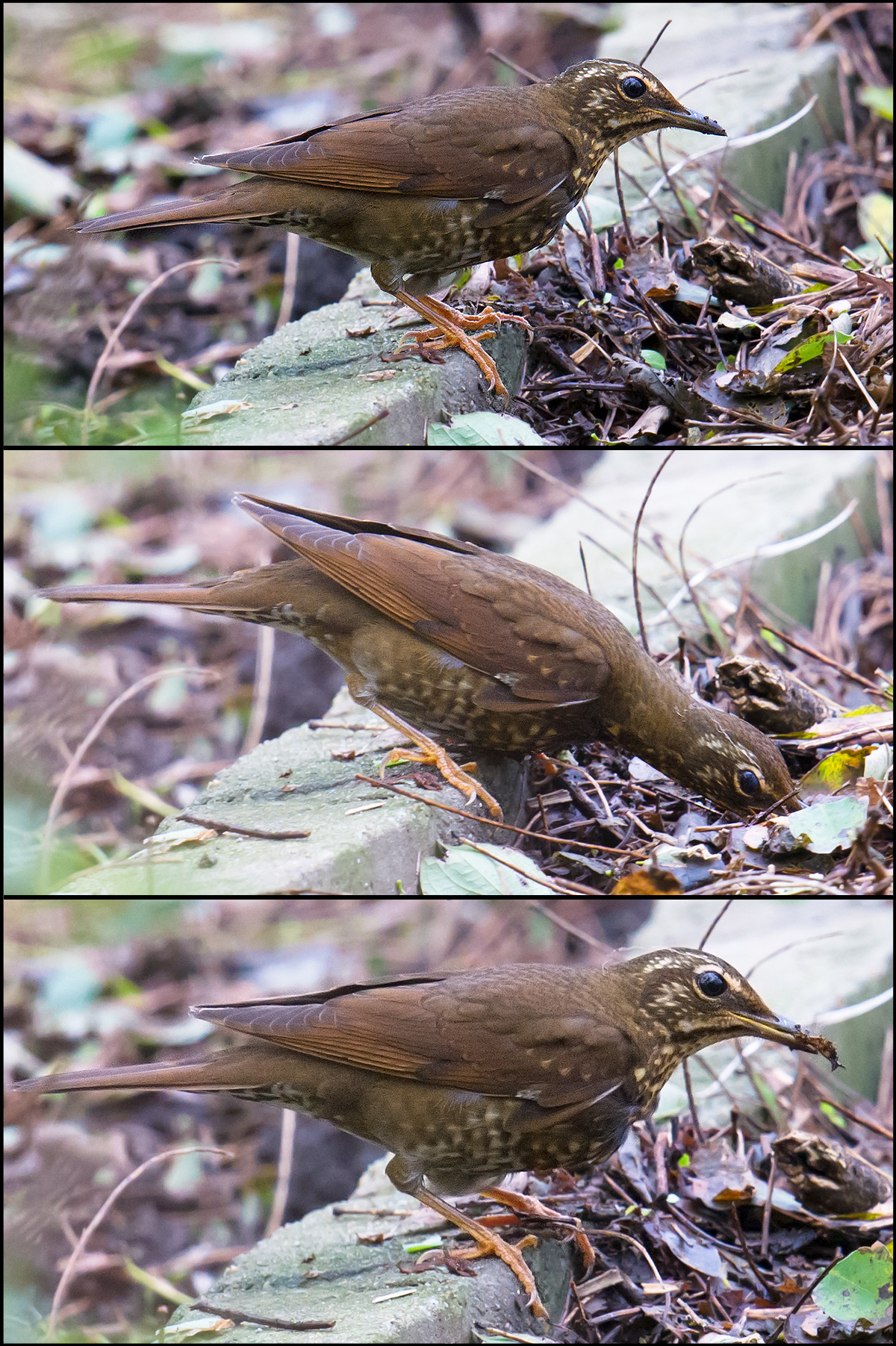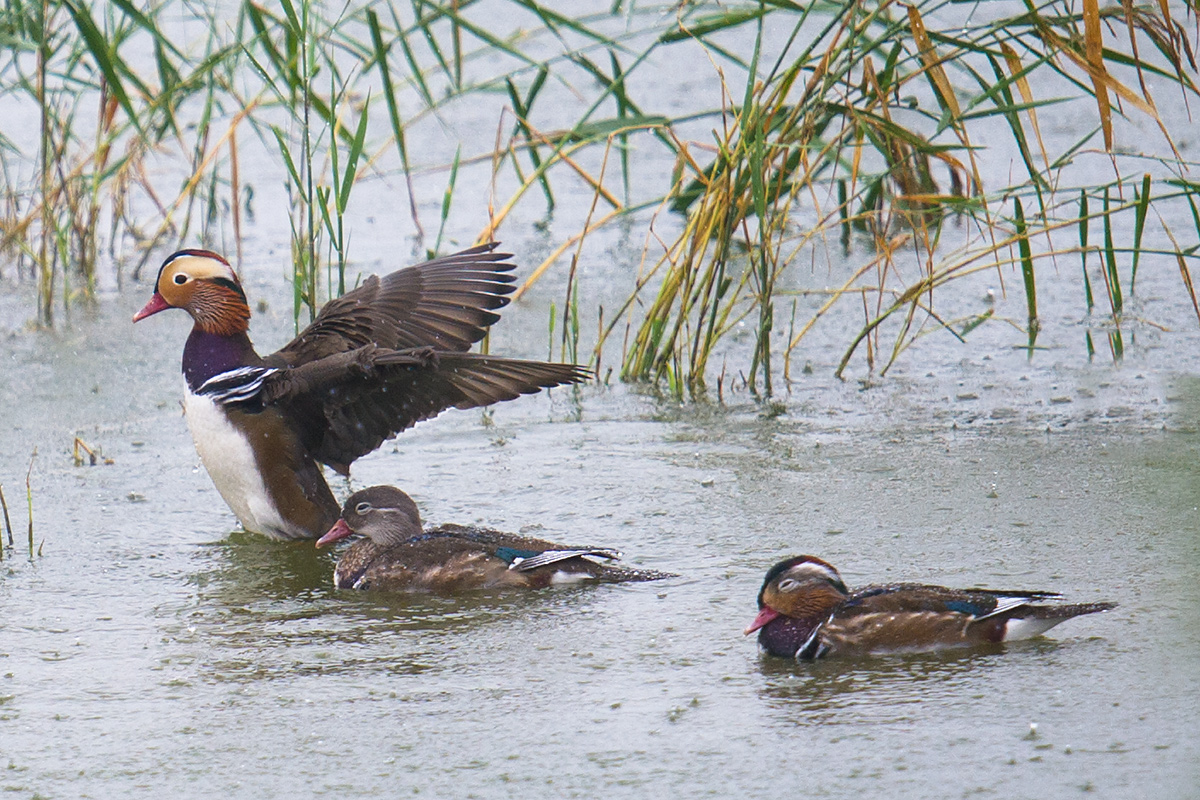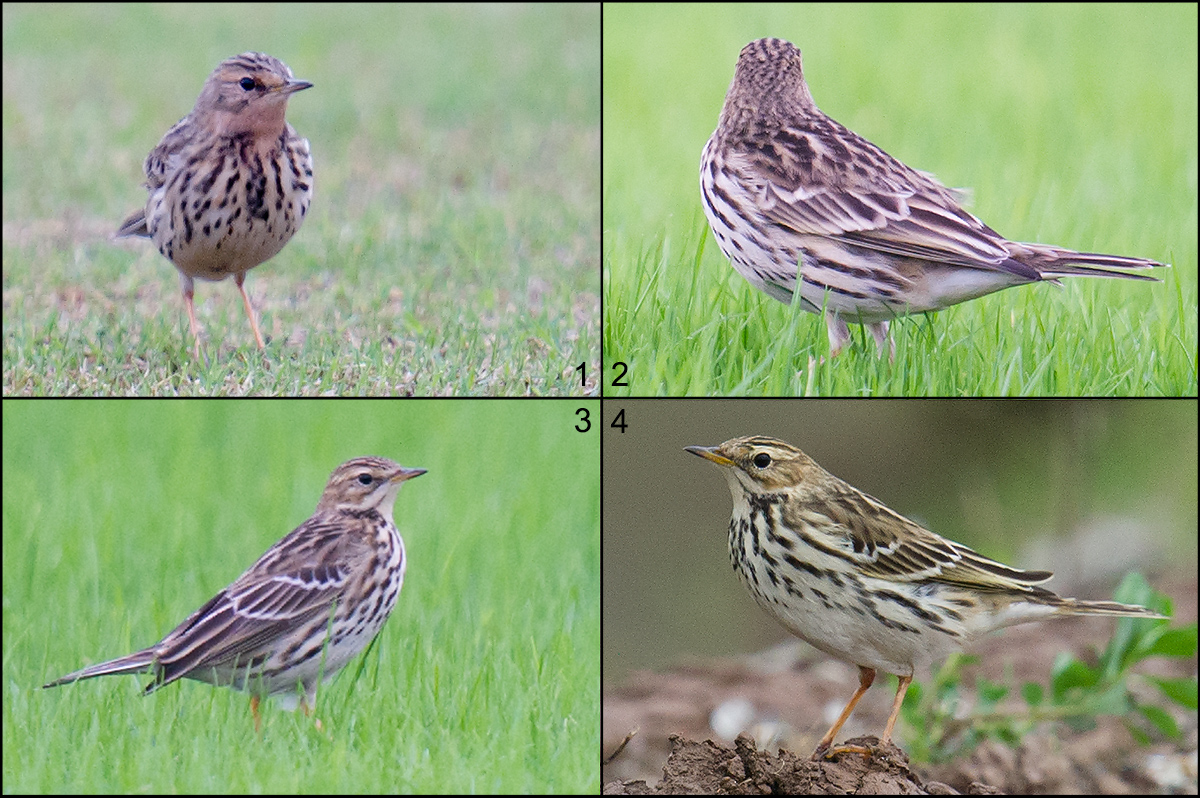by Craig Brelsford
Founder, shanghaibirding.com
On Thurs. 20 Oct. and Sun. 23 Oct., Elaine Du and I birded Shanghai’s Cape Nanhui and the sod farm south of Pudong Airport (31.112586, 121.824742). On 23 Oct. Elaine and I were joined by British birder Michael Grunwell. The two days yielded 92 species. After the Pomarine Jaeger, the big news was rare autumn sightings of Narcissus Flycatcher, another record of Nordmann’s Greenshank, and still more evidence that the highly threatened Nanhui wetland is much depended on by Black-faced Spoonbill.
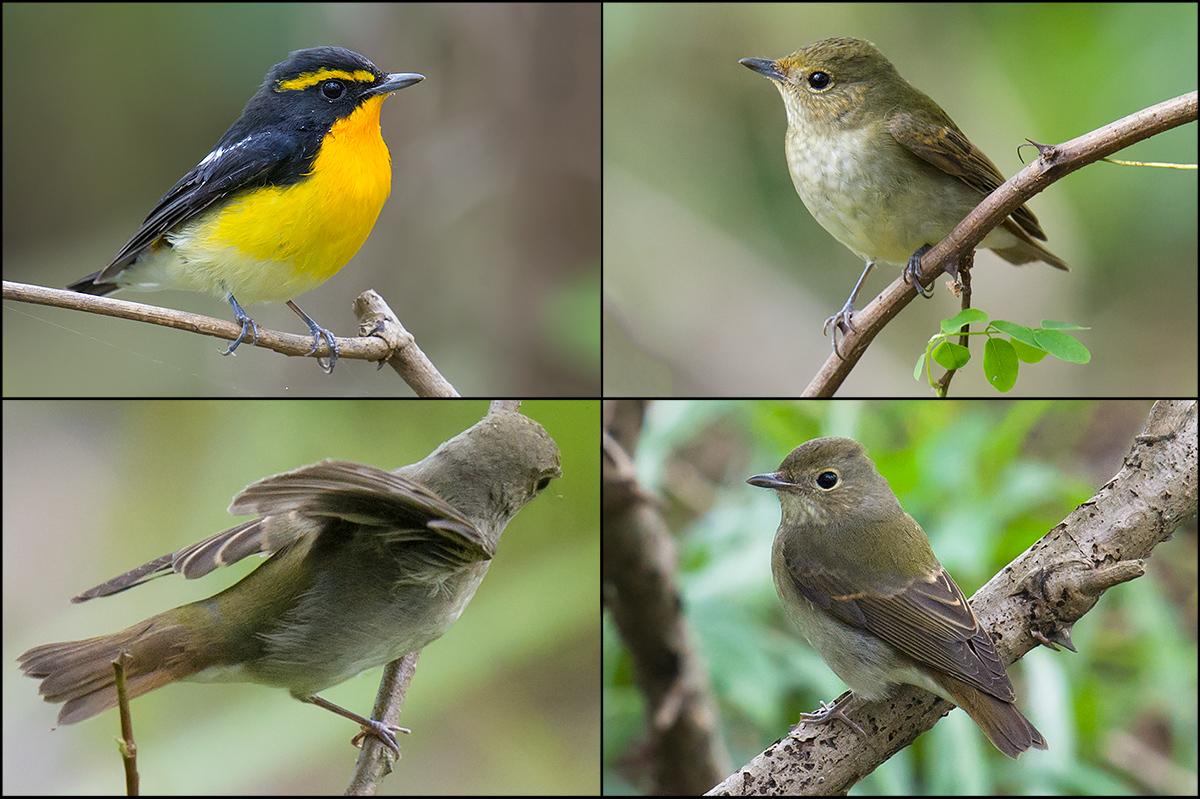
On 20 Oct. in the canal at the base of the sea wall at Cape Nanhui, Elaine and I had 18 Mandarin Duck and 2 season’s first Greater Scaup. On 23 Oct., the Nanhui microforests yielded Eurasian Woodcock, Ashy Minivet, Siberian Thrush, Red-throated Thrush, and season’s first Pale Thrush. A male Siberian Rubythroat popped out of the undergrowth and a Northern Boobook dozed before a crowd of photographers. At the line of trees (30.859995, 121.910061) near South Lock, 6 km south of the Magic Parking Lot (30.882688, 121.972489), we had season’s first Tristram’s Bunting. Dishui Lake (30.908702, 121.945124) is attracting ducks again, the most notable Sunday being season’s first Tufted Duck and Common Pochard.
The sod farm, which we visited Sunday morning, and which lies just off the S32 freeway, was worth the small investment of time required to get there. The grassy area gave us an unusually large (80) group of Red-throated Pipit. At Cape Nanhui, we have been experiencing this species only in fly-by mode, but at the farm dozens of them were feeding on the ground. Michael and I studied the pipits carefully and concluded the group was pure Red-throated. We saw not a single Buff-bellied Pipit.
Ducks are once again gracing the canals and ponds of Nanhui. The most numerous were, as expected, Eastern Spot-billed Duck (285 over the two days) and Eurasian Teal (270 on 23 Oct.). Less numerous was Eurasian Wigeon, and there were sprinklings of Gadwall, Mallard, Northern Shoveler, Northern Pintail, and Garganey.
OTHER NOTES
• Uniquely among the Shanghai region’s passage-migrant flycatchers, most of which appear in roughly equal numbers on both the spring and autumn migrations, Narcissus Flycatcher appears almost exclusively on the spring migration. We were therefore pleasantly surprised Sunday to see the three males and three females. Did Typhoon Haima send them our way? What are the migration patterns of this beautiful flycatcher?
• The importance of the Nanhui wetlands—as well as the dangers they face—can hardly be overstated. On 20 Oct. at the skua site, Hé Xīn told me that the defunct wetland in which we were standing would already have been utterly transformed by now had it not been for the intervention of Chinese birders, who secured a one-year delay. Within a radius of a few hundred meters of the skua site stood 24 endangered Black-faced Spoonbill and an endangered Nordmann’s Greenshank. The dependence of Black-faced Spoonbill on the defunct wetland reserve is obvious and could be demonstrated by a group of high-schoolers doing a science project. Shanghai lies at the mouth of one of Earth’s greatest waterways (the Yangtze River) and is a major point on Earth’s greatest migratory flyway—yet this wealthy city, a world financial center with a rich natural heritage, entirely lacks an easily accessible wetland reserve on its mainland. The one, weak attempt—the defunct Nanhui reserve, with its crumbling buildings, torn-up boardwalk, and rotting signs—stands near the gallows, in the nick of time being given a stay of execution. And yet, even now, the defunct reserve, mismanaged, unloved, and undervalued, even now the place still attracts Class A birds! When, oh when, will the Shanghai government and Shanghai people learn to value at their true worth their spoonbills, greenshanks, and vagrant skuas? When, I ask, will they see as an asset to be cherished, and not a burden to be cast away, the thousands of birds that migrate through Earth’s greatest city? When will the Shanghai people apply their renowned cleverness and skill to protecting, rather than dredging up the home of, the symbol of their city, Reed Parrotbill? When will Shanghai take a cue from Hong Kong and build its own Mai Po? When will it follow the example of Singapore and create its own Sungei Buloh?
PHOTOS
